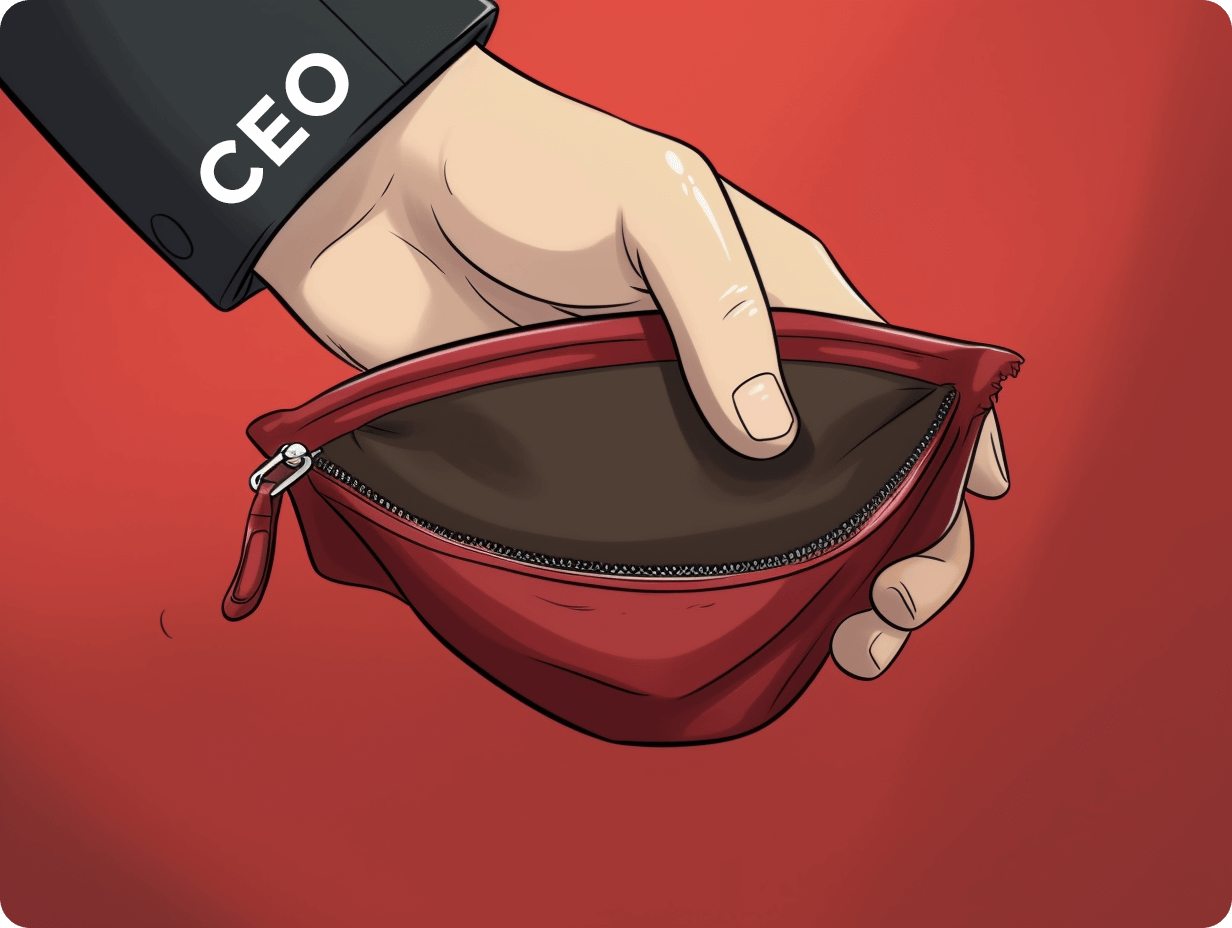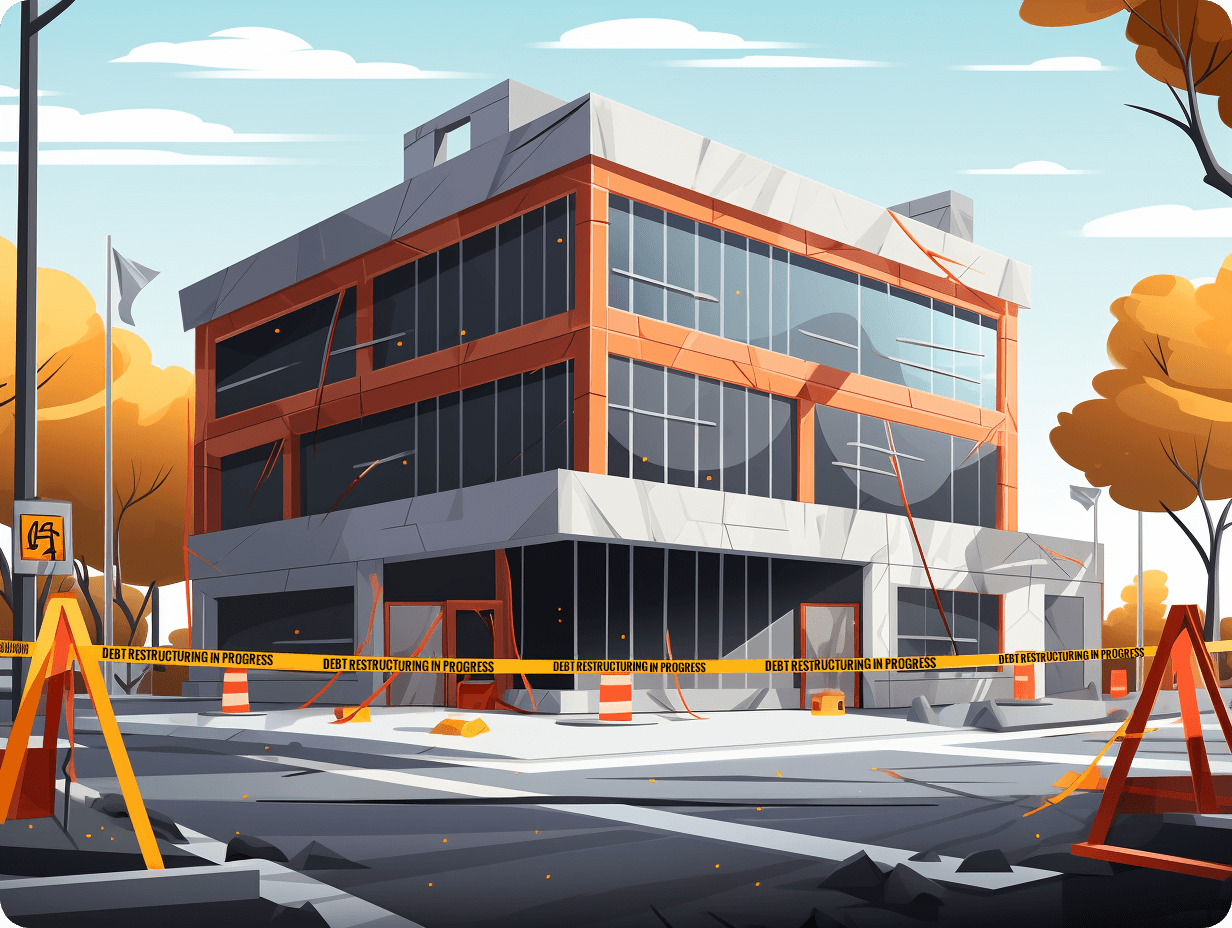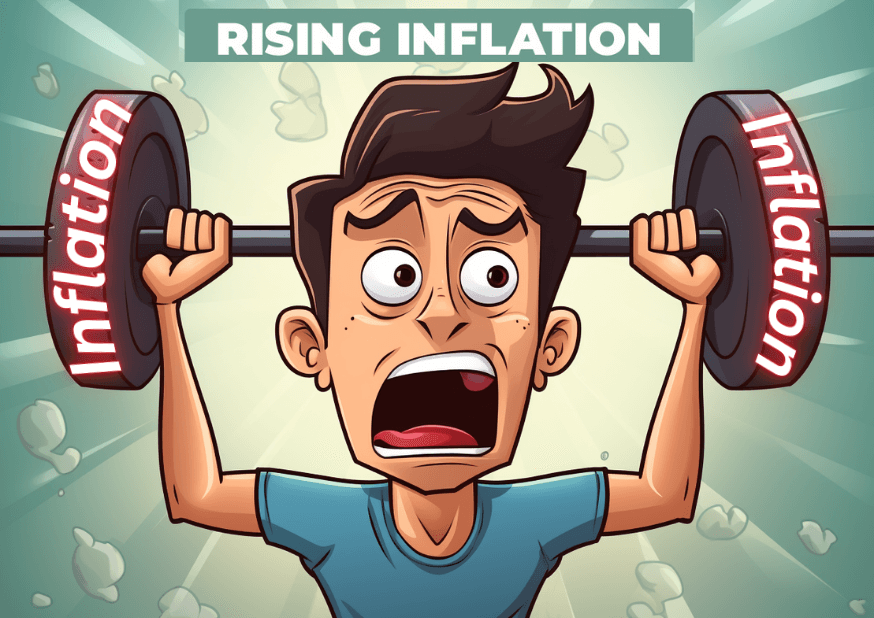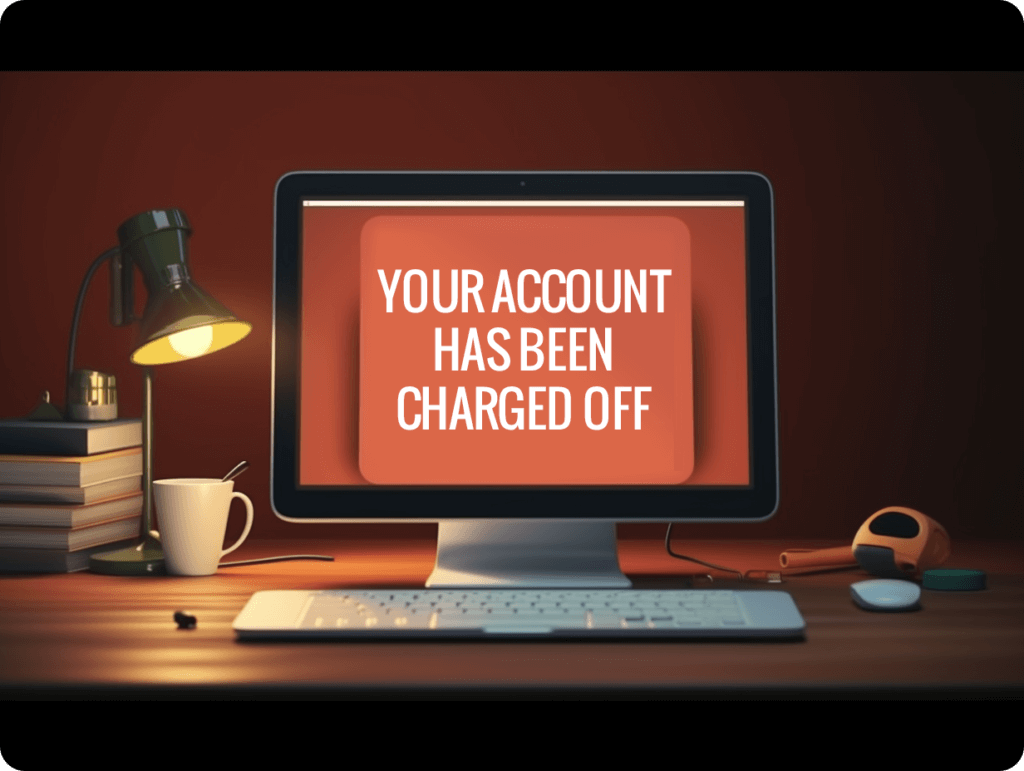- Blogs
- /
- What is Insolvency in Business and 3 Top Strategies to Stay Safe
What is Insolvency in Business and 3 Top Strategies to Stay Safe

Summary
Insolvency occurs when a company cannot pay debts when they become due. Although it looks pretty simple, every entrepreneur must understand the concept of insolvency since it directly impacts their business’s operations, liabilities, and potential paths forward.
Now, insolvency doesn’t necessarily mean the end of the road for a business. Instead, it opens up opportunities for restructuring or even turning things around. However, ignoring the signs of insolvency could lead to severe consequences like bankruptcy.
That’s why you must gain insight into what constitutes insolvency and how it can be managed. This knowledge would help you easily navigate through turbulent financial waters.
Key Takeaways
- Insolvency happens when a business is unable to pay its debt.
- The two major types of insolvency include balance sheet and cash flow insolvency.
- Balance sheet insolvency occurs when a company’s liabilities exceed its assets.
- With cash flow insolvency, the company doesn’t have the funds to address its financial needs.
- Poor financial management, market fluctuations, and high debt levels often cause insolvency.
- Insolvency can be managed with asset liquidation, debt restructuring, voluntary arrangements, or administration.
What is Insolvency in Business

As we’ve mentioned above, insolvency in business refers to the inability of a company to pay its debts. This state indicates that the business is experiencing financial distress, often due to a lack of liquidity to meet its financial obligations.
Getting a solid understanding of insolvency can help your business make proactive decisions by identifying warning signs early.
For instance, if your business consistently struggles to meet its financial commitments or experiences declining cash flow, these could be vital indicators of insolvency.
By recognizing these signs, you can promptly address your financial challenges and prevent the situation from worsening.
It’d also help you understand when to start negotiating with creditors for extended payment terms or seeking additional financing options. Doing this can help you avoid dangerous situations like bankruptcy.
One more thing. Understanding insolvency can protect you from the legal repercussions of continued financial instability.
That’s because when a business fails to address its insolvency issues adequately, it may face legal actions from creditors or regulatory authorities. Therefore, watching out for signs of insolvency can help protect the interests of all stakeholders involved in your business.
Here are the Two Types of Insolvency in Business
1. Cash Flow Insolvency
Cash flow insolvency happens when a company doesn’t have enough cash to meet its immediate financial obligations.
This means that even though the business may be profitable on paper, it struggles to pay bills, loans, or employee salaries. We often see this with small retail stores that might face cash flow insolvency during slow sales periods—like winter—despite having valuable inventory.
This type of insolvency can severely impact day-to-day operations. It can lead to delayed payments to suppliers and vendors, resulting in strained relationships and difficulty in acquiring essential supplies for the business.
But that’s not all. Due to financial constraints, cash flow insolvency may force the company to delay paying employees or reduce their working hours.
Some of the most common signs of cash flow insolvency you should watch for include constant delays in paying bills and outstanding debts despite generating revenue.
Businesses facing this issue resort to short-term borrowing or credit extensions as temporary solutions but struggle with long-term sustainability.
2. Balance Sheet Insolvency
This insolvency happens when a company’s liabilities exceed the value of its assets. In simpler terms, if all the company’s assets were sold off at fair market value, there wouldn’t be enough money left after settling all debts and liabilities.
The best way to identify the signs of balance sheet insolvency involves analyzing financial statements like the balance sheet and income statement. Doing this can give you a clear picture of your company’s high debt levels compared to asset values.
For example, a manufacturing company might find itself in this predicament if it takes on substantial loans for equipment purchases but can’t generate sufficient profits from increased production capacity.
Difference Between Insolvency and Bankruptcy
Insolvency in business refers to the state of financial distress where a company cannot pay its debts when they are due. On the other hand, bankruptcy is a legal process that follows insolvency and involves seeking relief from debt through court intervention.
Although insolvency signifies financial instability, bankruptcy denotes a formal declaration of an inability to repay debts.
In practical terms, insolvency is an early warning sign for businesses to take corrective measures before reaching the point of no return. It allows companies to explore options like debt restructuring or refinancing before resorting to legal proceedings like bankruptcy.
From a legal standpoint, insolvency doesn’t necessarily lead directly to bankruptcy. Instead, it opens up opportunities for negotiation with creditors or implementing strategies for financial recovery.
Understanding these distinctions can help you navigate your financial challenges more effectively by taking proactive steps at the onset of insolvency.
Here’s What It Means for Your Business
Insolvency has a significantly different impact on business operations and stakeholders than bankruptcy. Insolvency often allows companies to restructure their finances while continuing operations under supervision or guidance from turnaround specialists.
Being insolvent may indicate underlying issues within your business’s financial health, but it also offers a window for implementing changes to restore stability and solvency.
This could involve renegotiating contracts with suppliers, reducing operating costs, or selling non-core assets. Doing this can help improve cash flow and address your business’s liabilities.
On the other hand, once a company enters into bankruptcy, it undergoes a more structured process overseen by the court system. This may result in liquidation—selling off assets—or restructuring debts.
Bankruptcy typically marks a significant turning point where control over critical decisions shifts from management to appointed trustees or administrators working to maximize returns for creditors.
So, while insolvency presents opportunities for self-directed action, bankruptcy triggers external oversight that could lead to irreversible consequences if not managed strategically.
Three Primary Causes of Insolvency

1. Poor Financial Management
Effective financial management is crucial for the success and longevity of any business. Good financial management involves keeping track of income, expenses, and investments to ensure the company operates within its means.
However, flawed financial planning can lead to cash flow problems, missed growth opportunities, and even insolvency.
A great example was how Webvan.com, a popular grocery delivery service, spent $1 billion on building warehouses. Sadly, the money Webvan spent on infrastructure far exceeded its sales growth. The company went bankrupt 18 months later after its creation.
So, ensure you improve your financial management by creating detailed budgets, regularly monitoring cash flow, and making informed decisions about investments and expenditures. Doing this will help your business avoid overspending and overspending its resources.
2. Market Fluctuations
Market fluctuations refer to unpredictable changes in economic conditions, consumer behavior, and other external factors affecting a business’s performance.
When it comes to insolvency, sudden and severe market downturns can cut consumer spending, decrease demand for products or services, and disrupt supply chains. These factors strain business cash flow and make it challenging to meet financial obligations.
We saw this during the 2008 financial crisis. Many businesses faced insolvency during the global financial crisis. And that was simply because the market experienced a severe downturn that impacted industries worldwide.
A more recent example would be the COVID-19 pandemic. The pandemic triggered intense market fluctuations that wrecked millions of businesses that couldn’t handle the lockdowns and economic downturn.
3. High-Levels of Debt
Businesses struggle with high debt levels when they accumulate more financial obligations than they can handle, such as loans and credit lines.
Excessive debt can strain a company’s financial resources, especially if interest payments become unmanageable. And insolvency becomes a real risk if the company’s revenue doesn’t cover its debt obligations.
A great example was how the immense debt from subprime mortgage loans worsened Lehman Brothers’ insolvency. Ultimately, the investment bank couldn’t survive, and its failure led to the 2008 financial crisis.
That said, once you notice your business is struggling with high levels of debt, then ensure you:
- Prepare Debt Reduction Plans: Create and stick to a debt reduction plan. Doing this can help you systematically decrease your outstanding debt obligations.
- Get Strategic Refinancing: Explore opportunities for refinancing at lower interest rates. Getting this right will alleviate your company’s debt burdens.
- Use Cash Flow Management: Efficient cash flow management will ensure that a portion of your revenue is allocated to debt repayment.
These strategies can help you maintain good financial health. It’d also help you gauge your company’s susceptibility to insolvency and how you can effectively manage your debt obligations.
Five Warning Signs of Insolvency to Watch For

1. Financial Ratios
Financial ratios are like a business’s report card. They show how well a company is performing financially.
Some key financial ratios you need to assess your business’s risk of insolvency include:
- The Current Ratio: It compares the ratio of your current assets to your liabilities.
- The Quick Ratio: Measures how fast your company can pay off short-term liabilities with liquid assets like cash.
- The Debt-to-equity Ratio: It compares the sum of your company’s total debt and liabilities against the total shareholder equity.
These ratios help determine if your business has enough resources to cover its liabilities.
If these ratios indicate potential insolvency, your company may struggle to meet its financial obligations. So, if your business’s current ratio is less than ‘1,’ it suggests that your company may have difficulty paying off its short-term debts.
Calculating these ratios involves using specific formulas and tools, such as accounting software or spreadsheets. However, you can easily calculate your company’s financial ratios by plugging in your balance sheet and income statement numbers.
The best way to interpret these financial ratios is to compare them with your business’s industry standards or historical data. If your company’s current ratio has declined over time, this could signal an increased risk of insolvency.
2. Inability to Secure Financing
Another significant financial indicator is a business’s inability to secure financing or credit from traditional sources like banks and investors.
When lenders become hesitant to extend credit or demand higher interest rates due to concerns about a company’s ability to repay debts, it could signify potential insolvency.
Also, frequent late payments to creditors and suppliers can indicate underlying financial troubles within the business. Consistently delaying payments to essential partners and vendors would damage your relationship and worsen your company’s financial situation.
Sometimes, businesses have used short-term loans or supplier advances as stopgap measures for their cash flow problems. And though these methods offer temporary relief, they are often a clear sign of deeper underlying issues related to liquidity and solvency.
3. Cash Flow Problems
Recognizing cash flow issues is crucial in identifying potential insolvency threats. Cash flow refers to the movement of money into and out of your business.
A negative cash flow indicates that more money is going out than coming into your company. And yes, this can lead to severe financial trouble.
You must create accurate cash flow projections that forecast future cash inflows and outflows based on your company’s expected sales and expenses. This will help you anticipate periods when you might struggle with insufficient funds.
Also, the best way to avoid cash flow challenges is by implementing strategies like tightening credit policies, reducing unnecessary expenses, or negotiating extended payment terms with your suppliers.
Imagine a small retail store experiencing an inventory problem due to slow sales during certain winter months. The store can avoid overstocking items that unnecessarily tie up capital by adjusting their purchasing decisions based on projected cash flows rather than past trends alone.
4. Operational Signs
Take one good look at any business’s operations on a day-to-day basis, and it’d be pretty easy to tell if the company is battling insolvency.
One common operational sign to watch for is declining sales revenue over an extended period without a corresponding decrease in expenses or operation adjustments.
Reduced employee morale and high turnover rates could also indicate internal organizational challenges, impacting the business’s performance and long-term survival.
It worsens if management begins deferring maintenance on essential equipment or neglecting necessary repairs due to budget constraints. This indicates underlying cash flow problems affecting critical operational capabilities.
You must watch for changes in suppliers’ payment terms within a company’s operations. These new terms could include requesting extended repayment periods or negotiating more favorable terms.
These new terms could indicate that the business is stressed and desperately searching for breathing room amidst mounting pressure.
5. Legal Actions
Businesses struggling with insolvency often face legal action from their creditors seeking repayment, in addition to filing for bankruptcy. Companies could also be sued if there is evidence of fraudulent activities affecting solvency.
One of the best ways to avoid this is by maintaining accurate financial records and complying with tax regulations.
You’ll also need to build solid relationships with lenders through transparent communication about potential difficulties in meeting obligations.
Two Critical Implications of Insolvency

Impact on All Stakeholders
Insolvency in a business has significant consequences for various stakeholders, including shareholders, creditors, and employees.
First, if the company becomes insolvent, shareholders may experience a loss of investment. Creditors risk not receiving full payment for goods or services provided to the business. And employees might face job insecurity or even unemployment due to insolvency.
Even though directors and executives have legal responsibilities when a company is insolvent, they must act in the best interest of creditors rather than shareholders and employees.
If they fail to fulfill these duties, they could be personally liable for debts incurred during insolvency. That’s why when a company becomes insolvent, employees are laid off, salaries are reduced, payments to suppliers are delayed, and share value for investors is devalued.
Recovery and Debt Restructuring Options
One of the best solutions for insolvent businesses is exploring recovery and restructuring plans. Debt restructuring involves renegotiating new terms with creditors to make repayments more manageable within the company’s financial constraints.
Also, mergers or acquisitions present opportunities for businesses undergoing insolvency. They can merge with stronger companies or be acquired by them, providing an injection of capital that aids in stabilizing operations post-insolvency.
It’s essential to weigh the pros and cons of various recovery strategies before deciding on recovery from insolvency.
For example,
- Successful debt restructuring can help businesses regain financial stability without resorting to drastic measures like bankruptcy.
- However, debt restructuring may lead to extended repayment periods or higher overall interest payments.
Several companies, such as Apple and Marvel Entertainment, effectively restructured their operations and survived and thrived after overcoming their financial challenges.
They did this through strategic changes like diversifying product offerings and streamlining internal processes.
Here’s How You Can Prevent Insolvency

1. Embrace Proactive Financial Management
As we’ve seen so far, financial planning and forecasting are crucial in insolvency prevention. You can anticipate and proactively address potential challenges by creating detailed financial plans.
For instance, your company forecasts a cash flow shortage in the upcoming months. To mitigate the risk of insolvency, you can explore options like renegotiating payment terms with suppliers or securing additional funding.
Remember, regular financial health checks are essential for identifying early warning signs of financial distress. And that includes closely monitoring vital financial indicators like cash flow, profitability, and debt levels.
Conducting these assessments will help you detect trends and promptly implement strategies to rectify the situation before it escalates into insolvency.
2. Stay Legally Compliant
Adhering to regulatory requirements is paramount for safeguarding against potential legal issues that could lead to insolvency. You must stay updated on relevant industry laws and regulations while fully complying with all statutory obligations.
Staying legally compliant is instrumental in avoiding insolvency risks from non-compliance penalties or legal disputes. That said, ensure you’re meticulously following all applicable laws related to taxation, employment practices, environmental regulations, and other areas pertinent to their operations,
Legal counsel is also vital in guiding businesses through complex legal matters associated with insolvency risks. So, get advice from experienced attorneys to help you navigate intricate legal frameworks effectively.
How to Manage Balance Sheet Insolvency
Restructure Your Debts
One of the best ways to deal with balance sheet insolvency is debt restructuring. This process will allow your company to negotiate new terms with its creditors.
You should push for new terms that extend the repayment period or reduce the interest rate. This can alleviate some financial burdens and help your business regain stability.
Restructuring debts can be beneficial for your business because it allows you to manage your financial obligations more effectively.
If your company struggles to meet its monthly loan payments due to declining revenue, debt restructuring can allow you to renegotiate the loan terms. This can make it easier to fulfill your obligations without further straining your finances.
In some cases, debt restructuring may involve converting existing debt into equity. This means that creditors become partial business owners instead of being owed money.
Although this approach can dilute current shareholders’ ownership stakes, it can also inject much-needed capital into your company and improve its financial health.
Consider Asset Liquidation
Suppose your company cannot pay off its debts and liabilities using its current resources. In that case, you may opt to sell assets like real estate, equipment, or investments to generate funds to settle outstanding obligations.
Asset liquidation has helped countless insolvent businesses to free up cash quickly by converting non-liquid assets into readily available funds. This works particularly well for retail stores with excess inventory struggling financially. These retail stores can hold a clearance sale or auction off these items at discounted prices to raise immediate cash.
However, while asset liquidation offers short-term relief by providing much-needed liquidity during financial distress for insolvent companies, it also has drawbacks.
For one, selling valuable assets could compromise long-term profitability and operational capabilities if not carefully managed.
Also, the proceeds from asset sales may not fully cover all outstanding debts if market conditions are unfavorable or if assets have depreciated significantly in value over time. So, look deeply at your business, industry, and customers before liquidating your assets.
How to Manage Cash Flow Insolvency
1. Liquidation
Like balance sheet insolvency, when a business faces cash flow insolvency, liquidation is a reliable path to fixing it.
During liquidation, the company’s assets are sold off to repay its debts. This can happen through either a compulsory liquidation ordered by the court or a voluntary liquidation initiated by the company itself.
In compulsory liquidation, also known as winding up, the court orders the closure of the business due to its inability to pay debts.
Meanwhile, in voluntary liquidation, shareholders or directors decide to wind up the company because it cannot pay its debts when they fall due.
The liquidator appointed during this process takes control of all assets and distributes them among creditors according to their priority. Once all assets have been realized and distributed, any remaining debt is written off (if applicable), and the company ceases operations.
2. Voluntary Arrangements
Another route for resolving insolvency is through voluntary arrangements. This involves agreeing with creditors regarding how outstanding debts will be repaid over time.
This route allows your business to continue operating while repaying its debts under more manageable terms.
Voluntary arrangements can take different forms, from company voluntary arrangements (CVAs) to individual voluntary arrangements (IVAs), depending on whether the business entity or individual is seeking relief from insolvency.
3. Administration Route
The administration route serves as another mechanism for resolving cash flow insolvency issues.
When a company enters administration, it receives protection from legal action by creditors. At the same time, efforts are made to rescue it as a going concern or achieve better outcomes than possible through immediate winding-up proceedings.
However, during this period, an administrator—often an insolvency practitioner—is appointed with the powers to effectively achieve these objectives.
The administrator manages the company’s affairs and seeks ways to restructure its operations, sell parts of the business if necessary, or arrange new financing options.
Closing Thought
Understanding insolvency in business is crucial for any entrepreneur or business owner. It’s not just about recognizing the signs of insolvency but also understanding the types, procedures, and consequences.
Understanding these concepts can help you take proactive steps to address potential insolvency issues before they escalate.
It doesn’t matter whether it’s managing balance sheet insolvency or navigating through corporate insolvency. Being well-informed empowers you to make strategic decisions that can save your business from financial collapse.
Now that you understand business insolvency better take the time to assess your business’s financial health. Look for any warning signs and consider seeking professional advice if needed.
Remember, being proactive and informed is the key to navigating the complexities of insolvency and safeguarding the future of your business.
FAQs
What are the types of insolvency?
There are two main types of insolvency: cash flow insolvency, where a business cannot pay its debts as they fall due, and balance sheet insolvency, where a business’s liabilities exceed its assets.
What causes business insolvency?
Poor financial management, economic downturns, excessive debt burden, or loss of critical customers can cause insolvency.
What are the warning signs of insolvency in a business?
Warning signs include persistent cash flow problems, increasing debt levels, declining sales or profitability, inability to pay creditors on time, and legal actions from creditors.
What are the implications of business insolvency?
The implications include potential closure or liquidation of the company, loss for creditors and investors, and damage to reputation and credit rating. It also affects employees who may face job losses.
How can businesses prevent and manage insolvency?
Businesses can avoid or manage insolvency by effectively maintaining strong financial controls and planning.
This includes managing cash flow efficiently and seeking professional advice when facing financial challenges.
Our Latest Blogs:
FREE Strategy Session to Fix Your Credit Blogs / Facebook Twitter Linkedin Instagram Share Summary How to get late...

ThisIsJohnWilliams
FREE Strategy Session to Fix Your Credit Blogs / Facebook Twitter Linkedin Instagram Share Summary Inflation is a complex...

ThisIsJohnWilliams
FREE Strategy Session to Fix Your Credit Blogs / In a society where credit scores can significantly influence economic...

ThisIsJohnWilliams

ThisIsJohnWilliams

ThisIsJohnWilliams






